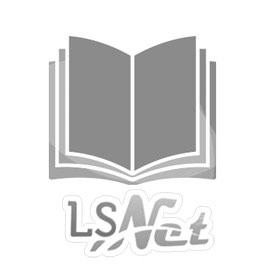 16.0%OFF
16.0%OFF

Download App
| >> | LShop | >> | Book | >> | Health & Personal De... | >> | Self-help & Personal... | >> | Uml 2 For Dummies 01... |
 16.0%OFF
16.0%OFF
ISBN
:
9788126509058
Publisher
:
Wiley India Pvt Ltd
Subject
:
Self-help & Personal Development, Computer Programming / Software Development
Binding
:
Paperback
₹
299.0
 16.0% OFF
16.0% OFF
₹
251.0
Buy Now
Shipping charges are applicable for books below Rs. 101.0
View DetailsEstimated Shipping Time : 5-7 Business Days
View DetailsDescription
UML (Unified Modeling Language) is a graphical modeling language used to specify, visualize, construct, and document applications and software systems, which are implemented with components and object-oriented programming languages, such as Java, C++, and Visual Basic. UML incorporates the object-oriented community's consensus on core modeling concepts and provides a standard way for developers to communicate the details of system design and development. In addition to object-oriented modeling of applications, UML is also used for business-process modeling, data modeling, and XML modeling. Models for software systems are as important as having a blueprint for a large building or an outline for a book. Good models enhance communication among project teams and assure architectural soundness. The more complex the software system, the more important it is to havemodels that accurately describe the system and can be understood by everyone. UML helps provide this via a standard for graphical diagrams. About the Author Michael J. Chonoles is the Chief of Methodology at the Advanced Concepts Center (ACC), where he leads the technological and methodological direction of the ACC technology transfer and training practice and is the lead author of the ACC's popular OOAD with UML suite of courses. When the ACC was part of Lockheed Martin, he was Lockheed's OMG representative. He is a member of the OMG's Revision Task Force (RTF). There, he is responsible for Use Cases and is an official reviewer of the UML Version 2 specification. Michael has co-authored a book on object-modeling technology, tech edited UML books by various publishers, and written articles for the Journal of Object-Oriented Programming and Journal of Object-Oriented Development, among other publications. James A. Schardt is the Chief Technologist at the Advanced Concepts Center (ACC), where he is involved with object-oriented development, data warehousing, and distributed systems. He teaches UML at Fortune 500 companies in the U.S and abroad. He has also authored a column on object-oriented analysis for SIGS Publications. Table of Contents Introduction Part I: UML and System Development What’s UML About, Alfie? Following Best Practices Part II: The Basics of Object Modeling Objects and Classes Relating Objects That Work Together Including the Parts with the Whole Reusing Super classes: Generalization and Inheritance Organizing UML Class Diagrams and Packages Part III: The Basics of Use-Case Modeling Introducing Use-Case Diagrams Defining the Inside of a Use Case Relating Use Cases to Each Other Part IV: The Basics of Functional Modeling Introducing Functional Modeling Capturing Scenarios with Sequence Diagrams Specifying Workflows with Activity Diagrams Capturing How Objects Collaborate Capturing the Patterns of Behavior Part V: Dynamic Modeling Defining the Object’s Lives with States Interrupting the States by Hosting Events Avoiding States of Confusion Part VI: Modeling the System’s Architecture Deploying the System’s Components Breaking the System into Packages/Subsystems Part VII: The Part of Tens Ten Common Modeling Mistakes Ten Useful UML Web Sites Ten Useful UML Modeling Tools Ten Diagrams for Quick Development Index
Related Items
-
of
Are you sure you want to remove the item from your Bag?
Yes
No
Added to Your Wish List
OK

Your Shopping Bag

- 3 Items
Item
Delivery
Unit Price
Quantity
Sub Total
 0.0
Total Savings :
Grand Total :
0.0
Total Savings :
Grand Total :
Order Summary